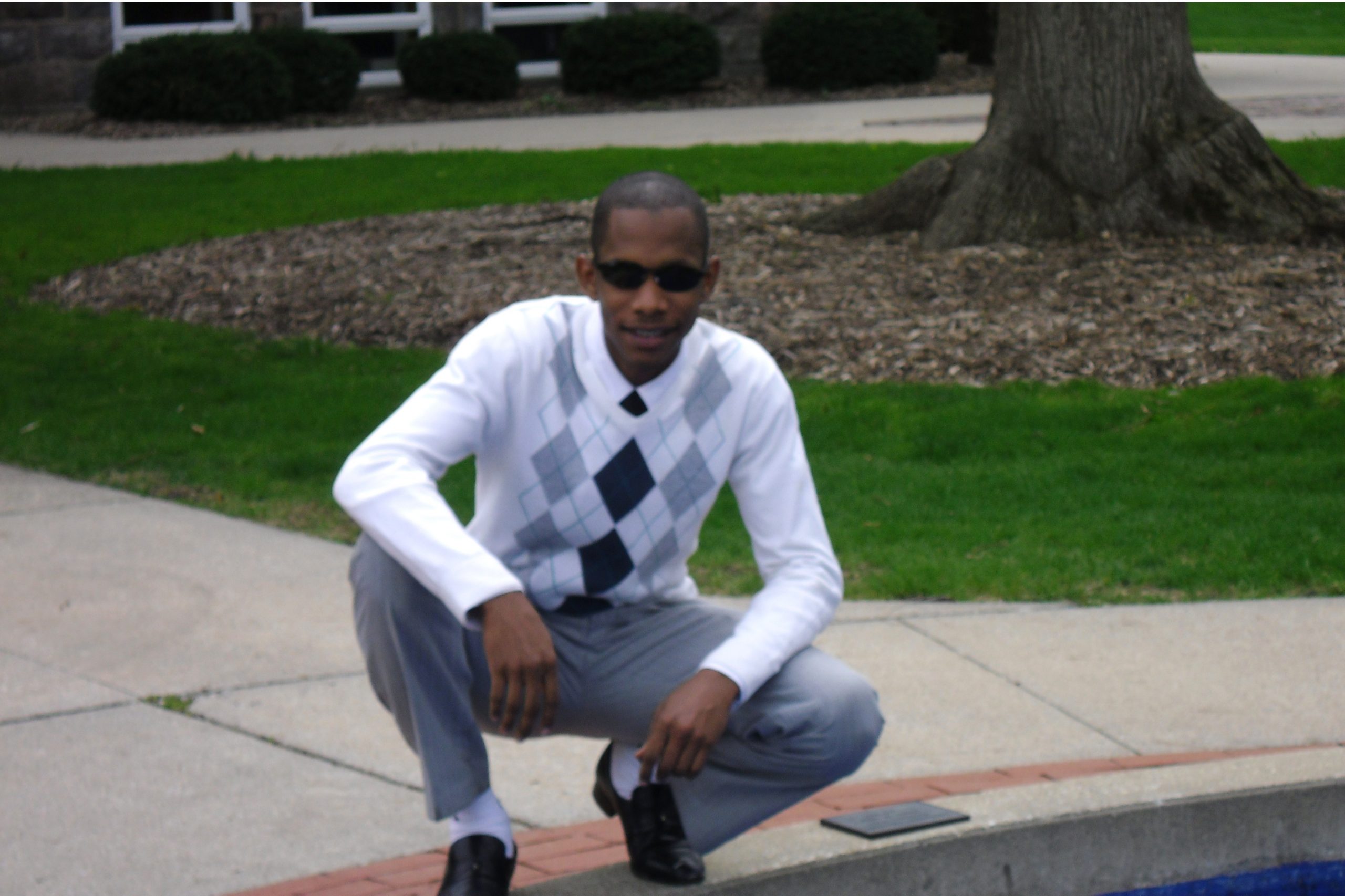Mohamed Meissara is a junior TESOL major and communication minor from Mauritania. He was born in a family of seven brothers and two sisters in Atar, a town four hours away from the capital. When he was 21, Mohamed came to the States for the first time and enrolled at Goshen College as a Fulbright scholarship recipient.
Facts about Mauritania:– It’s capital is called Nouakchott and the country’s territory is divided between 11 states
– There are several languages spoken throughout Mauritania: Hassaneya (Arabic dialect), Wolof, Pulaar, Soninke and French
– The size of Mauritania is bigger than Texas (398,000 square miles v. 261,914)
– The cheapest round trip will cost you about $1800
Q: What is considered one of the most significant custom or celebration in Mauritania?
A: We have two most famous feasts. One of it is at the end of Ramadan after a month of fasting, and it’s called Eid Al Fiter which means the feast of breaking fast. Before the celebration begins, we buy new clothes that we wear during the celebration day. We also cook a lot of food and visit family members and relatives.
The second feast is called Eid Al Adha which means the feast of sacrifice. On this day we celebrate the day when God saved Ishmael, the son of Abraham. During the celebration we wear new clothes, sacrifice lamps and visit each other. On these two celebrations, we also ask for forgiveness from others.
Q: What is your favorite food and drink from Mauritania?
A: My favorite food is Maru Welhut—a rice and fish plate. My mother and sister usually prepare it and we eat it for lunch probably three to four times a week. The plate is a mixture of fish, vegetables (tomatoes, carrots, sweet potatoes) and rice.
In my culture we don’t have a great variety of drinks. If we don’t drink water, we usually drink a mixture of water, milk, and sugar; we call it Zreeg. If you put the right amount of the three ingredients you get an extraordinary drink!
Q: What are some of the most popular places to visit in Mauritania?
A: A lot of tourists go to many places in my country. My hometown Atar gets the biggest share of tourists every year. The oldest mosque in Mauritania is the Mosque of Chengit in a city called Chengit. The fact that this mosque is made of stones and located in a beautiful place makes it one of the main targets of tourists who go to Mauritania. The city of Chengit was the center of all the old traditional schools in the past, so that’s why Mauritania is also called the Land of Chengit. Tourists also enjoy going around the deserts.
Q: What would your typical day in Mauritania look like?
A: During the school year I usually wake up early in the morning. The first thing I do is take a shower, pray and have breakfast. Sometimes I make tee for the family. When I come back from school, I usually find the lunch ready. After lunch we sit together and drink tea. We drink tea twice a day: during breakfast and after lunch. We also pray five times a day: early in the morning, between 12 and 12:30, between four and five, six and eight, and between eight and 9:15.
Did you know?
In Mauritania students don’t have homework in the sense of homework that exists in the U.S. They only have one or two exams during the whole school year and the homework is to read the lessons every day to prepare for those big exams. Most of the time, there are no papers or quizzes!


